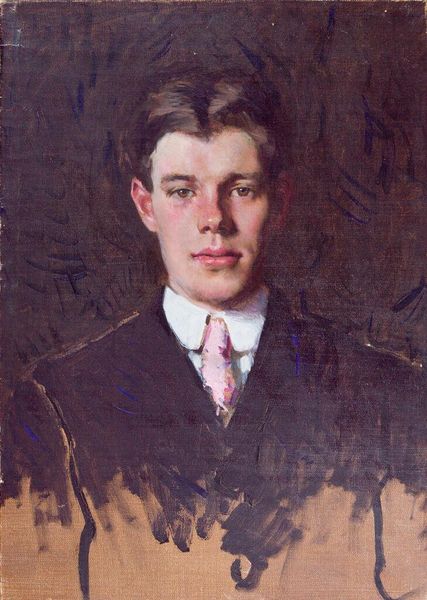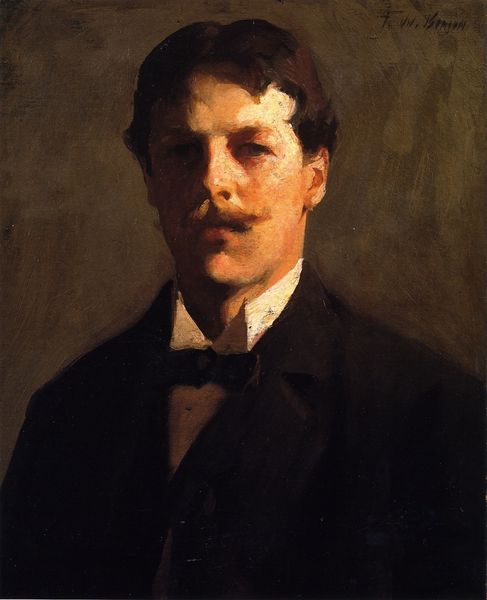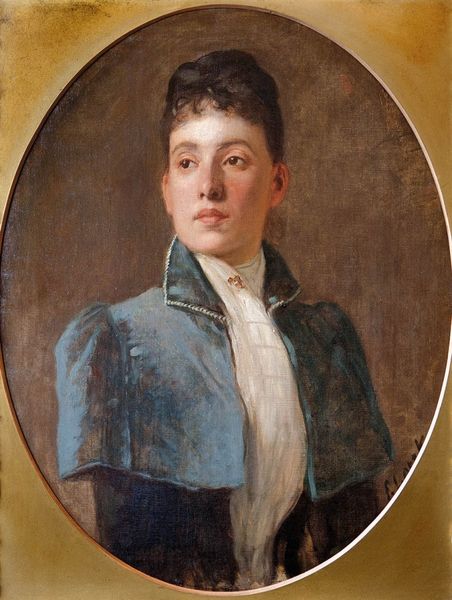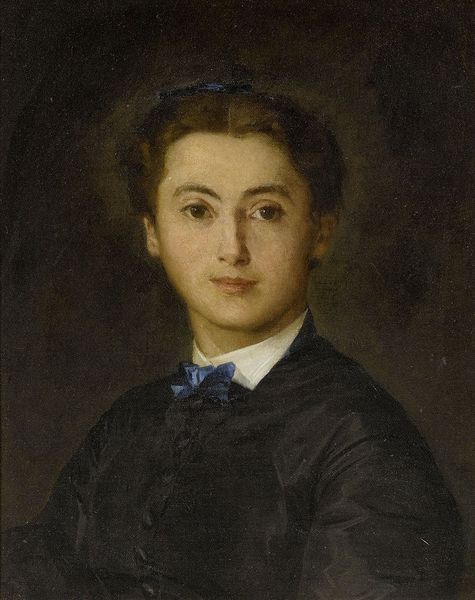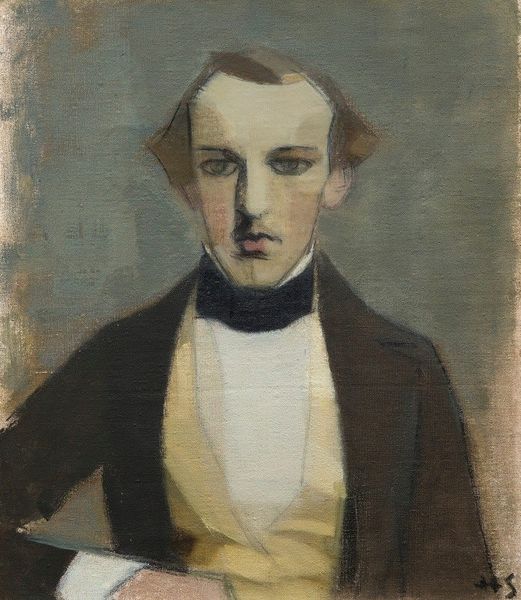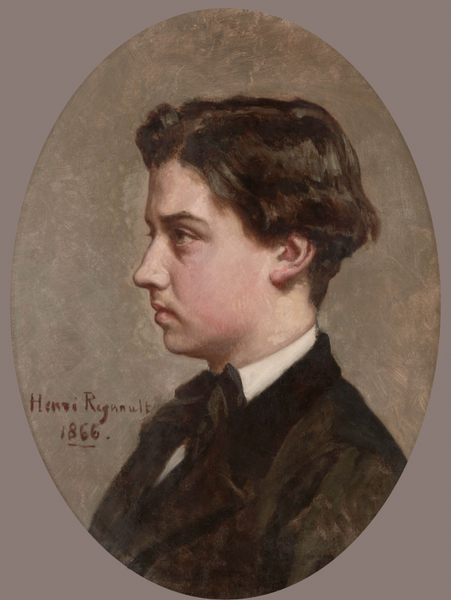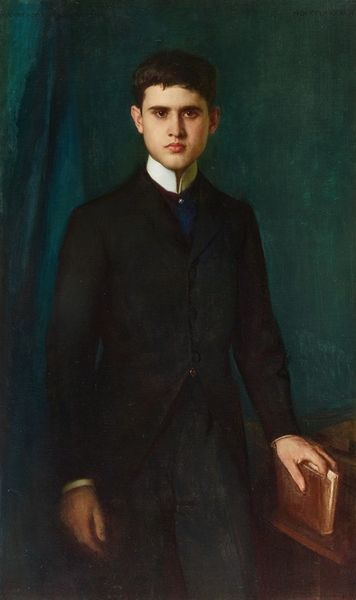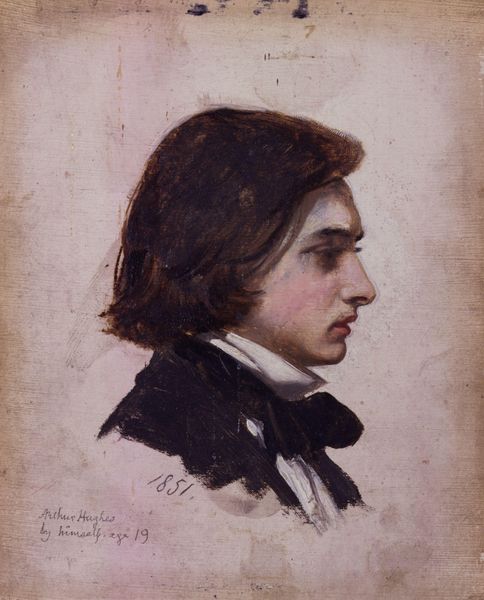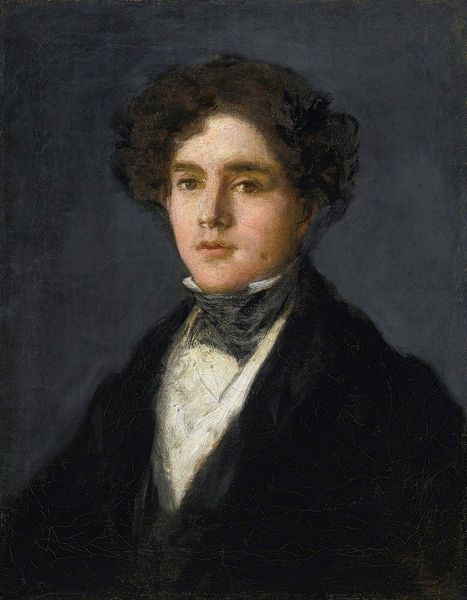
Copyright: Public domain
This self-portrait was painted by Wilhelm Leibl in 1862, using oil on canvas. Leibl’s technique, typical of academic painting at the time, involves careful layering of paint to create a realistic likeness. Yet it’s worth thinking about where these materials come from. Oil paint is manufactured, not simply found. Canvas is a textile, industrially produced. Even the brushes Leibl used were made by specialized craftspeople. His art relies on a whole division of labor. Look closely, and you’ll notice the fine brushwork, especially in the rendering of Leibl’s face. This isn’t just a matter of artistic skill; it reflects hours of dedicated labor. Each stroke is a physical act, a testament to the artist’s commitment. When we consider the making of this painting, we move beyond simply admiring the image, towards understanding the social and economic context in which it was created. The value of the artwork is tied to the value of labor, both Leibl’s and that of the many hands that provided his materials.
Comments
No comments
Be the first to comment and join the conversation on the ultimate creative platform.
